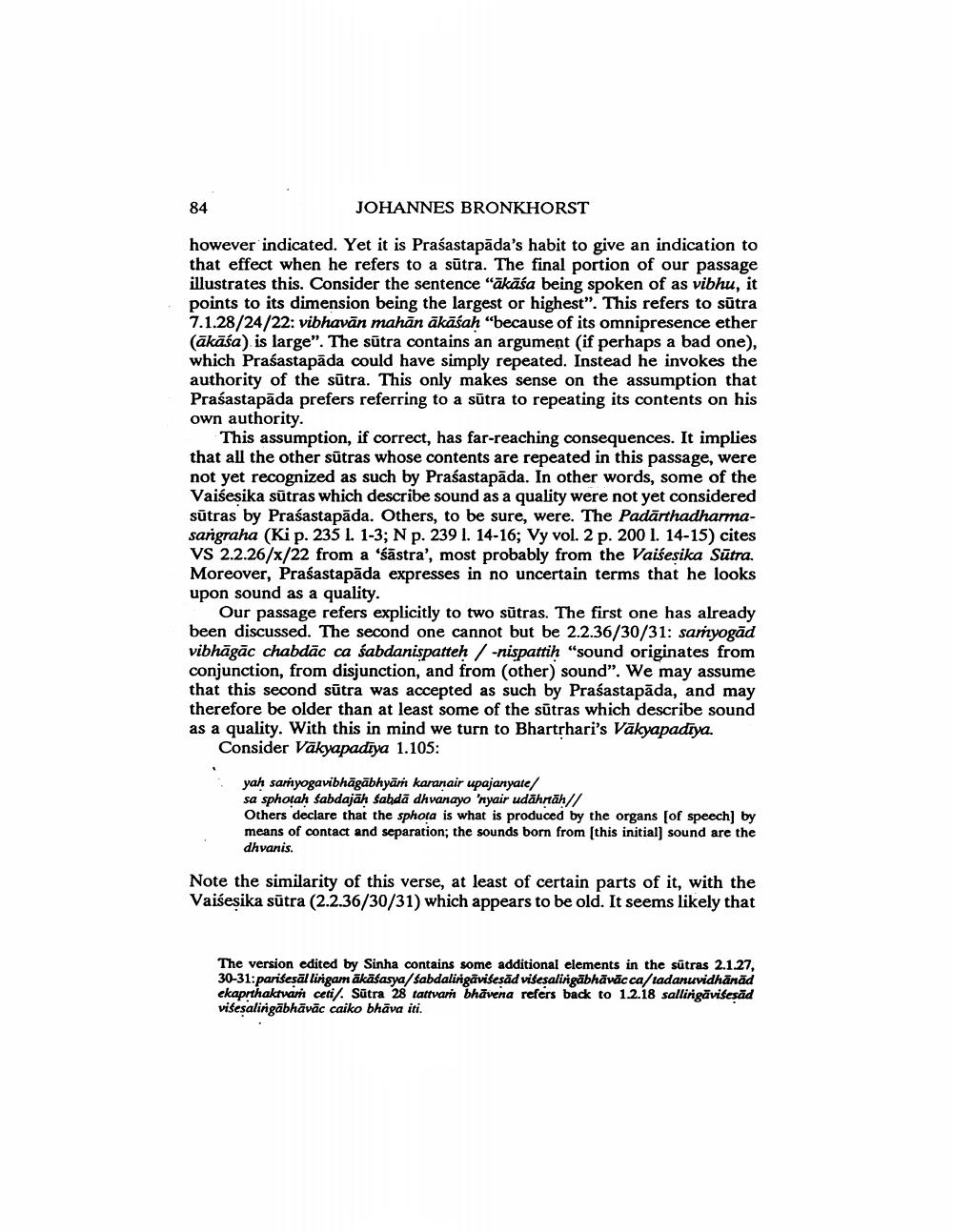________________
JOHANNES BRONKHORST
however indicated. Yet it is Prasastapāda's habit to give an indication to that effect when he refers to a sūtra. The final portion of our passage illustrates this. Consider the sentence "ākāśa being spoken of as vibhu, it points to its dimension being the largest or highest". This refers to sūtra 7.1.28/24/22: vibhavan mahān ākāśah "because of its omnipresence ether (ākāśa) is large". The sūtra contains an argument (if perhaps a bad one), which Prasastapāda could have simply repeated. Instead he invokes the authority of the sūtra. This only makes sense on the assumption that Prasastapāda prefers referring to a sūtra to repeating its contents on his own authority.
This assumption, if correct, has far-reaching consequences. It implies that all the other sūtras whose contents are repeated in this passage, were not yet recognized as such by Praśastapāda. In other words, some of the Vaiấesika sūtras which describe sound as a quality were not yet considered sūtras by Prasastapāda. Others, to be sure, were. The Padārthadharmasangraha (Kip. 235 1. 1-3; Np. 239 1. 14-16; Vy vol. 2 p. 200 1. 14-15) cites VS 2.2.26/x/22 from a 'śāstra', most probably from the Vaiśesika Sūtra. Moreover, Prasastapāda expresses in no uncertain terms that he looks upon sound as a quality.
Our passage refers explicitly to two sūtras. The first one has already been discussed. The second one cannot but be 2.2.36/30/31: saryogād vibhāgāc chabdāc ca sabdanispatteh / -nispattih "sound originates from conjunction, from disjunction, and from (other) sound". We may assume that this second sūtra was accepted as such by Prasastapāda, and may therefore be older than at least some of the sūtras which describe sound as a quality. With this in mind we turn to Bhartrhari's Vākyapadiya.
Consider Vakyapadiya 1.105:
yah sarnyogavibhāgābhyān karanair upajanyate/ sa sphotah Sabdajāh Sabda dhyanayo 'nyair udahntäh// Others declare that the sphota is what is produced by the organs (of speech] by means of contact and separation; the sounds born from (this initial] sound are the dhvanis.
Note the similarity of this verse, at least of certain parts of it, with the Vaišesika sūtra (2.2.36/30/31) which appears to be old. It seems likely that
The version edited by Sinha contains some additional elements in the sūtras 2.1.27, 30-31: parisesäl lingam ākāšasya/ Sabdalirgāvifesad visesalirgābhāvāc ca/tadanuvidhänād ekaprthaktvaṁ ceti. Sutra 28 tattvarn bhāvena refers back to 1.2.18 sallirgāvisesad visesalirgābhāvāc caiko bhāva iti.




